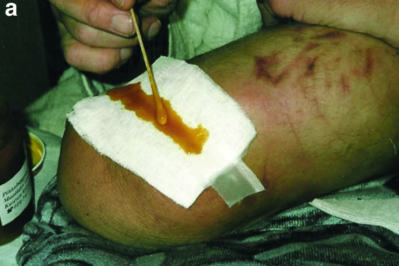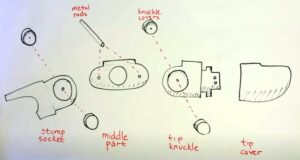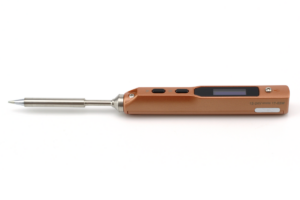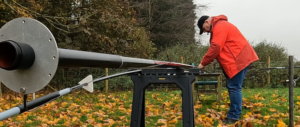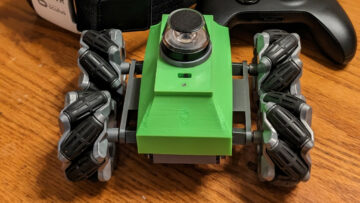In the constant pursuit of innovation, it’s easy to overlook the wisdom of the past. The scientific method and modern research techniques have brought us much innovation, which can often lead us to dismiss traditional cultural beliefs.
However, sometimes, there are still valuable kernels of truth in the folklore of yesteryear. This holds true in a medical study from Finland, which focused on the traditional use of spruce resin to treat chronic wounds, breathing new life into an age-old therapy.
A Persistent Dilemma
Chronic wounds are defined as wounds that fail to proceed through a normal, timely healing process. While there’s no strictly defined timescale, wounds are typically deemed as chronic if they don’t progress through healing milestones after four weeks to three months. These wounds pose a significant burden on global healthcare systems. They create a significant workload for healthcare personnel, and are costly and difficult to manage. Most of all, though, they impair the quality of life for patients, who suffer these wounds for great lengths of time.
Patients with chronic wounds often suffer from other chronic health conditions such as advanced age, malnutrition, or vascular diseases. These can complicate or exclude treatment options that would otherwise help with the issue. Treatment often becomes a delicate balance between managing the underlying co-morbidities and ensuring effective wound care. Any potential new treatment for chronic wounds could thus help many patients stuck in an uncomfortable medical quagmire.
An Ancient Solution with Modern Potential
Traditional medicine is rife with remedies that have been passed down through generations. Many of these have been studied, and found to be ineffective, snake oil, or simply not very helpful. Many, though, are yet to be thoroughly explored by modern science.
Resin is applied either directly over the wound, or onto a bandage that is then applied.
” data-medium-file=”https://platoaistream.com/wp-content/uploads/2023/05/revisiting-folk-wisdom-for-modern-chronic-wound-care.png” data-large-file=”https://platoaistream.com/wp-content/uploads/2023/05/revisiting-folk-wisdom-for-modern-chronic-wound-care-2.png?w=800″ decoding=”async” loading=”lazy” class=”size-medium wp-image-589583″ src=”https://platoaistream.com/wp-content/uploads/2023/05/revisiting-folk-wisdom-for-modern-chronic-wound-care.png” alt width=”400″ height=”267″ srcset=”https://platoaistream.com/wp-content/uploads/2023/05/revisiting-folk-wisdom-for-modern-chronic-wound-care-2.png 857w, https://platoaistream.com/wp-content/uploads/2023/05/revisiting-folk-wisdom-for-modern-chronic-wound-care-2.png?resize=250,167 250w, https://platoaistream.com/wp-content/uploads/2023/05/revisiting-folk-wisdom-for-modern-chronic-wound-care-2.png?resize=400,267 400w, https://platoaistream.com/wp-content/uploads/2023/05/revisiting-folk-wisdom-for-modern-chronic-wound-care-2.png?resize=800,533 800w” sizes=”(max-width: 400px) 100vw, 400px”>
Among these traditional remedies is the resin of the Norway spruce (Picea abies), a sticky substance that has been used for centuries to treat various ailments. Researchers have turned their attention to this old-world remedy in recent decades, investigating its potential for modern wound care, inspired by its use by past generations.
As it turns out, spruce resin is a complex material, made up of a combination of various resin acids and other compounds known as lignans, which are believed to help plants discourage consumption by herbivores. However, they also have a host of other beneficial properties. These compounds exhibit strong antimicrobial activity, and have been found to promote wound healing and skin regeneration, essential elements in treating chronic wounds.
Of course, modern medicine isn’t about peeling something off a tree, rubbing it on, and hoping it helps. Instead, the research group has been working to quantify the mechanisms of action that make spruce resin a seemingly effective agent when it comes to healing chronic wounds.
The resin was able to prevent bacteria from undergoing mitosis, at times by thickening the cell walls to a significant degree.
” data-medium-file=”https://platoaistream.com/wp-content/uploads/2023/05/revisiting-folk-wisdom-for-modern-chronic-wound-care-1.png” data-large-file=”https://platoaistream.com/wp-content/uploads/2023/05/revisiting-folk-wisdom-for-modern-chronic-wound-care-5.png?w=695″ decoding=”async” loading=”lazy” class=”size-medium wp-image-589584″ src=”https://platoaistream.com/wp-content/uploads/2023/05/revisiting-folk-wisdom-for-modern-chronic-wound-care-1.png” alt width=”400″ height=”359″ srcset=”https://platoaistream.com/wp-content/uploads/2023/05/revisiting-folk-wisdom-for-modern-chronic-wound-care-5.png 770w, https://platoaistream.com/wp-content/uploads/2023/05/revisiting-folk-wisdom-for-modern-chronic-wound-care-5.png?resize=250,225 250w, https://platoaistream.com/wp-content/uploads/2023/05/revisiting-folk-wisdom-for-modern-chronic-wound-care-5.png?resize=400,359 400w, https://platoaistream.com/wp-content/uploads/2023/05/revisiting-folk-wisdom-for-modern-chronic-wound-care-5.png?resize=695,625 695w” sizes=”(max-width: 400px) 100vw, 400px”>
Research involved using resin samples to attack colonies of fungi and bacteria in agar plates, with liquid media experiments also conducted. This helped researchers qualify the antimicrobial properties of the resin, and determine which pathogens the resin could effectively fight. Other tests investigated the resin’s ability to protect against Staphylococcus aureus infection, with drug-resistant strains of the harmful bacteria currently causing great concern in hospitals across the world.
Findings bore out that the resin was capable of antimicrobial activity by virtue of the fact it could destroy the cell walls and cell membranes of bacteria. Other potential mechanisms include a disruption of the bacteria cell’s energy supply. Meanwhile, it’s believed the lignan component of the resin may also play a role. These chemicals have anti-oxidative properties which may be helpful, and it’s suspected they may undergo transformation into hormone-like substances in the wound environment via microbial metabolism. It’s believed they may then play a positive role in cellular regeneration in the wound area.
Application techniques were also explored, with the primary method involving spreading resin across a wound area before covering it with a bandage. Alternatively, it can be applied to a bandage and then placed upon a wound. Typically, dressings were left in place for one to three days depending on wound activity.
The research paper also features multiple case studies where patients had excellent outcomes after resin treatment of chronic wounds, some of whom had been suffering for years. The before images make for gory viewing, but the after images show just how valuable this treatment can be. Further supporting this are the results of a 2012 clinical trial, in which all 23 patients successfully had their chronic wounds heal in a mean time of 43 days.
Looking Back To Look Ahead
In many ways, this research represents a meeting point of old and new. It’s a potent reminder that the wisdom of our ancestors can still guide us, that the pursuit of the novel doesn’t always have to mean discarding the old. As the medical community works to tackle the complex issue of chronic wound care, integrating this traditional remedy into modern treatment strategies could offer a much-needed breakthrough.
This blend of traditional knowledge and modern scientific rigor underscores the transformative potential of such research. It speaks to the value of tugging at old threads. Sometimes our forebearers really did know what they were talking about, even if they couldn’t explain it in detailed scientific terms. The healing power of the Norway spruce resin may well mark a significant step forward in chronic wound care, demonstrating how science can breathe new life into old wisdom. This journey from folkloric therapy to potential modern medical marvel continues, with each step bringing us closer to better patient outcomes.
(Header image: Norway Spruce, Norbert Frank, University of West Hungary, Bugwood.org)
- SEO Powered Content & PR Distribution. Get Amplified Today.
- PlatoAiStream. Web3 Data Intelligence. Knowledge Amplified. Access Here.
- Minting the Future w Adryenn Ashley. Access Here.
- Buy and Sell Shares in PRE-IPO Companies with PREIPO®. Access Here.
- Source: https://hackaday.com/2023/05/18/revisiting-folk-wisdom-for-modern-chronic-wound-care/
- :has
- :is
- :not
- :where
- $UP
- 1
- 2012
- 23
- 3d
- a
- ability
- Able
- About
- across
- Action
- activity
- advanced
- After
- against
- age
- age-old
- Agent
- All
- also
- always
- an
- Ancient
- and
- any
- applied
- ARE
- AREA
- AS
- At
- attack
- attention
- back
- Bacteria
- Balance
- BE
- becomes
- been
- before
- believed
- beneficial
- Better
- between
- Blend
- breakthrough
- BREATHE
- breathing
- Bringing
- brought
- burden
- but
- by
- CAN
- capable
- care
- case
- Case Studies
- causing
- centuries
- CFM
- chemicals
- Clinical
- closer
- combination
- comes
- community
- complex
- component
- Concern
- conditions
- conducted
- constant
- consumption
- continues
- could
- course
- covering
- create
- credit
- cultural
- Currently
- Days
- decades
- deemed
- defined
- Degree
- demonstrating
- Depending
- destroy
- detailed
- Determine
- device
- DID
- difficult
- directly
- diseases
- Dismiss
- Disruption
- Doesn’t
- Dont
- down
- each
- easy
- Effective
- effectively
- either
- elements
- energy
- ensuring
- Environment
- essential
- Ether (ETH)
- Even
- excellent
- exhibit
- experiments
- Explain
- Explored
- fact
- FAIL
- Features
- fight
- Finland
- focused
- For
- Forward
- found
- four
- from
- further
- generations
- Global
- great
- Group
- guide
- had
- harmful
- Have
- healing
- Health
- healthcare
- help
- helped
- helpful
- helps
- holds
- hoping
- hospitals
- host
- How
- However
- HTTPS
- Hungary
- if
- image
- images
- in
- include
- infection
- Innovation
- inspired
- instead
- Integrating
- into
- involved
- issue
- IT
- ITS
- journey
- just
- Know
- knowledge
- known
- lead
- left
- Life
- Liquid
- Look
- made
- make
- manage
- managing
- many
- mark
- marvel
- material
- max-width
- May..
- mean
- Meanwhile
- mechanisms
- Media
- medical
- medicine
- meeting
- method
- Milestones
- Modern
- months
- most
- much
- much-needed
- multiple
- New
- NIH
- no
- normal
- Norway
- novel
- of
- off
- offer
- often
- Oil
- Old
- on
- ONE
- Options
- or
- Other
- otherwise
- our
- out
- outcomes
- over
- passed
- past
- patient
- patients
- Personnel
- Place
- plants
- plato
- Plato Data Intelligence
- PlatoData
- Play
- Point
- positive
- potential
- power
- prevent
- primary
- process
- Progress
- promote
- properties
- protect
- qualify
- quality
- really
- recent
- regeneration
- represents
- research
- research group
- researchers
- Resin
- Results
- Role
- Science
- Second
- seen
- show
- significant
- simply
- Skin
- solution
- some
- something
- Speaks
- Spreading
- Step
- sticky
- Still
- Strains
- strategies
- strong
- studied
- studies
- Study
- substance
- Successfully
- such
- suffering
- supply
- Supporting
- suspected
- Systems
- tackle
- talking
- techniques
- terms
- tests
- that
- The
- the world
- their
- then
- therapy
- There.
- These
- they
- this
- thoroughly
- though?
- three
- Through
- time
- times
- to
- traditional
- Transformation
- transformative
- treat
- treating
- treatment
- tree
- trial
- true
- truth
- Turned
- turns
- two
- typically
- underlying
- university
- upon
- us
- use
- used
- using
- Valuable
- value
- various
- very
- via
- viewing
- was
- ways
- Weeks
- WELL
- were
- West
- What
- when
- which
- while
- WHO
- wisdom
- with
- working
- works
- world
- would
- wound healing
- wounds
- years
- yet
- zephyrnet

